In answering a question about double[,], I added a screenshot of LINQPad's output for that data structure:
![double[,]](../../images/3847294121.webp)
However, I got to wondering what a double[,,] looks like, and LINQPad won't visualize it for me. Additionally, I don't understand the format of the data which goes into it:
int[,,] foo = new int[,,]
{
{
{ 2, 3},
{ 3, 4}
},
{
{ 3, 4},
{ 1, 5}
}
};
Can anyone visualize this for me?

